การวิเคราะห์ตลาดป้ายดิจิทัลโฆษณาทั่วโลก: อุตสาหกรรมใดบ้างที่กำลังนำไปใช้เร็วที่สุด?
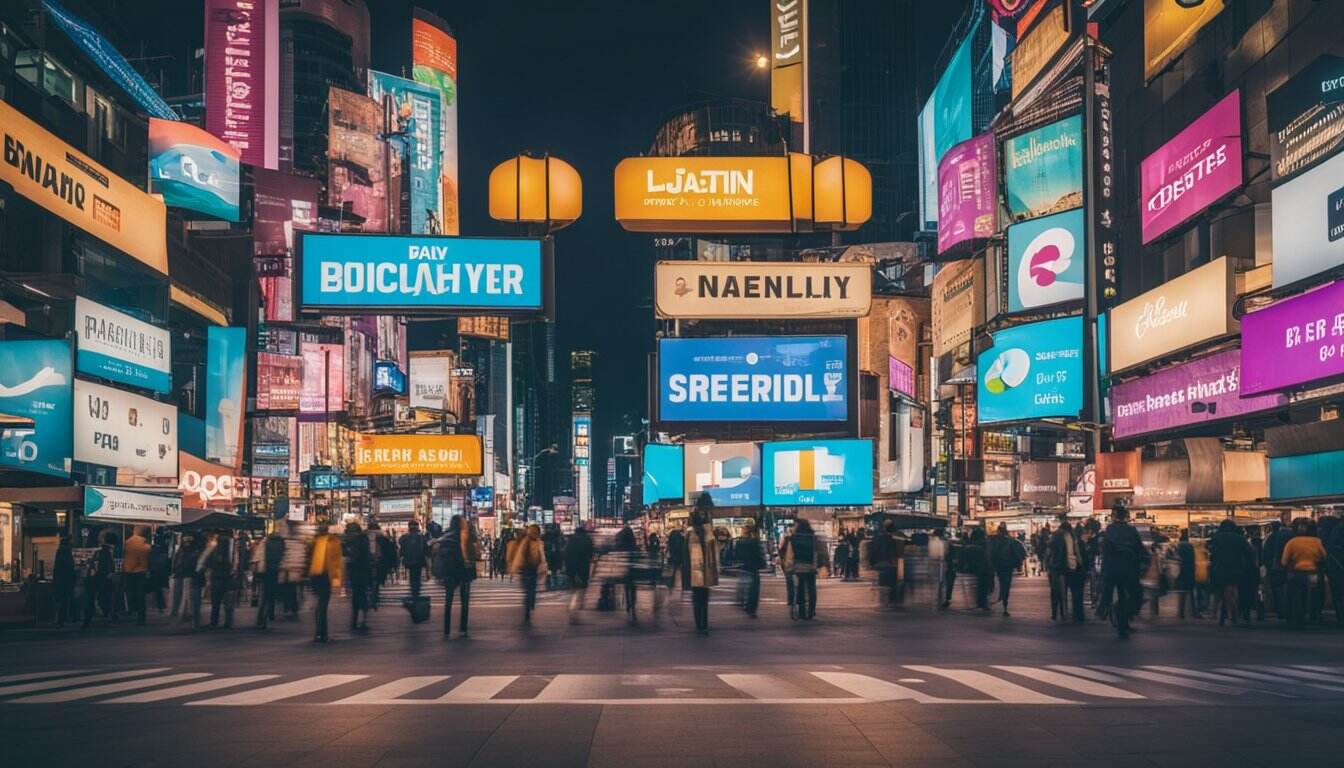
ในสภาพแวดล้อมธุรกิจที่วิ่งเร็วในปัจจุบัน การใช้ป้ายดิจิตอลได้กลายเป็นเครื่องมือสําคัญสําหรับอุตสาหกรรมต่างๆ เพื่อเพิ่มการเปิดเผยของแบรนด์และปรับปรุงประสบการณ์ของลูกค้า จากจอโฆษณาแบบปฏิสัมพันธ์ในศูนย์การค้า ถึงระบบการปล่อยข้อมูลในสนามบินและสถานีรถไฟใต้ดิน การใช้ป้ายดิจิตอล กําลังเปลี่ยนวิธีการที่บริษัทต่างๆ ติดต่อกับผู้บริโภค ในอัตราที่น่าประหลาดใจ ดังนั้น สาขาอุตสาหกรรมไหนที่กําลังนําเทคโนโลยีนี้มาใช้อย่างรวดเร็ว พวกเขาใช้ป้ายดิจิตอลอย่างไร เพื่อเพิ่มคุณค่าธุรกิจ บทความ นี้ จะ ช่วย คุณ ให้ มี การ วิเคราะห์ อย่าง ลึกซึ้ง.
#ตลาด DigitalSignage ทั่วโลก #DigitalSignage #DigitalAdvertisingSignage #DigitalSignageTechnology #DigitalAdvertising #AIAadvertising #IoTและDigitalSignage การประกาศทางดิจิตอล
ถ้าคุณต้องการรายละเอียดเพิ่มเติม โปรดติดต่อผม
Whatsapp: +86-13501581295
อีเมล: [email protected]
เว็บไซต์ : https://www.uhopestar.com/
#จอโฆษณาที่สมาร์ท #โฆษณาปฏิสัมพันธ์ #การแนะนําที่บุคคลสมาชิก #เมนูดิจิตอล #ระบบการแนะนําที่สมาร์ท #จอแสดงข้อมูลที่สมาร์ท
สรุปตลาด Digital Signage ของโฆษณาโลก
1.ขนาดตลาดและแนวโน้มการเติบโต
ตามสถาบันวิจัยตลาด ตลาดโฆษณาดิจิตอลไซน์จีเอสทีจีเอสโลกคาดว่าจะดําเนินการเติบโตอย่างต่อเนื่องระหว่างปี 2024 และปี 2030 ในปี 2023 ขนาดตลาดได้ถึง 25-30 พันล้านดอลลาร์สหรัฐ และคาดว่าจะเกิน 50 พันล้านดอลลาร์สหรัฐภายในปี 2030 โดยมีอัตราการเติบโตประกอบรายปีเฉลี่ย (CAGR) 7% - 10%
อเมริกาเหนือ ยังคงเป็นตลาดใหญ่ที่สุดในโลก โดยได้รับประโยชน์จากพื้นฐานเทคโนโลยีที่ก้าวหน้า อุตสาหกรรมโฆษณาที่พัฒนาสูง และการใช้งานที่แพร่หลายในอุตสาหกรรมค้าปลีกและการขนส่ง
ยุโรป เป็นตลาดที่ใหญ่เป็นอันดับสอง และประเทศต่างๆ เช่น เยอรมนี สหราชอาณาจักร และฝรั่งเศส กําลังส่งเสริมการก่อสร้างเมืองฉลาด และส่งเสริมการใช้สัญญาณดิจิตอล
เอเชีย - พิซิฟิก เป็นภูมิภาคที่เติบโตเร็วที่สุด โดยเฉพาะอย่างยิ่งในจีน อินเดีย ญี่ปุ่น และประเทศอื่นๆ ที่รัฐบาลและบริษัทกําลังเพิ่มการลงทุนด้านดิจิตอล
อเมริกาลาติน และ ตะวันออกกลางและแอฟริกา ก็เพิ่มขึ้นอีกด้วย ด้วยการเร่งเร่งการเมือง การใช้งานป้ายดิจิตอลในโฆษณากลางแจ้งและการค้าปลีกกําลังขยาย
#อุตสาหกรรมขนส่ง #โฆษณา #ร้านอาหาร #DigitalSignage #RetailIndustryโฆษณา #การส่งเสริมแบรนด์ #DigitalSignageApplications #SmartMeetingSystems
2. การใช้ ปัจจัยสําคัญ
a.ความก้าวหน้าทางเทคโนโลยีขับเคลื่อนการเติบโตของตลาด
การพัฒนาเทคโนโลยีการแสดงภาพความละเอียดสูงและการปฏิสัมพันธ์ การนําเทคโนโลยีต่างๆ เช่น 4K, 8K Ultra-high-definition display, OLED, Micro LED เป็นต้นมาใช้ ทําให้ประสบการณ์ทางสายตาของป้ายดิจิตอลน่าสนใจมากขึ้น
การรวม AI กับการวิเคราะห์ข้อมูล การใช้ป้ายฉลาดสามารถวิเคราะห์พฤติกรรมของผู้ชมผ่าน AI เพื่อบรรลุการผลิตโฆษณาที่บุคคลสรรค์ และปรับปรุงประสิทธิภาพโฆษณา
การบูรณาการอินเตอร์เน็ตของสิ่งของ (IoT) ใบแสดงสัญญาณดิจิตอลสามารถเชื่อมต่อเซ็นเซอร์ กล้อง และอุปกรณ์อื่น ๆ เพื่อบรรลุการส่งโฆษณาที่ฉลาด
#การดูแลสุขภาพ #การแสดงสัญญาณดิจิตอล #การศึกษาสุขภาพ #AIและ BigData #DigitalSignageTrends # 5GDigitalSignage #EnergyEfficientDigitalSignage #DigitalSignageCaseStudies
b.อุตสาหกรรมโฆษณามีความต้องการเพิ่มขึ้นสําหรับเนื้อหาที่มีความจิตร
โฆษณาสแตตติกแบบดั้งเดิม (เช่นโปสเตอร์และกล่องแสง) กําลังถูกเปลี่ยนไปโดยเนื้อหาดิจิตอล และแบรนด์ชอบโฆษณาแบบไดนามิกและมัลติมีเดีย เพื่อเพิ่มความสัมพันธ์ของผู้ใช้งานและอิทธิพลของแบรนด์
โปรแกรมการโฆษณา: บริษัทสามารถปรับเนื้อหาการโฆษณาในเวลาจริงโดยใช้เวลา สถานที่ สภาพอากาศ ผู้รับเป้าหมาย และเงื่อนไขอื่น ๆ เพื่อเพิ่มประสิทธิภาพการโฆษณา
#DigitalSignageInnovation #SmartAdPlacement #EInkDisplay #CloudManagementDigitalSignage #BigDataAdvertising #VirtualTryOn #ARVRAdvertising การประกาศข้อมูลขนาดใหญ่
c.ส่งเสริมการสร้างเมืองฉลาด
หลายประเทศกําลังส่งเสริมโครงการเมืองฉลาด และความต้องการในพื้นฐาน เช่น สถานีหยุดรถเมล์ฉลาด โบลบอร์ดดิจิตอล และจอขายขายของฉลาดได้เพิ่มขึ้น ทําให้ตลาดป้ายดิจิตอลเติบโต
#ตลาด DigitalSignage การเติบโต #DigitalSignageIndustryAnalysis #AdPlacementAccuracy #PremiumBrandAdvertising #DigitalSignageSmartification #InteractiveDigitalSignage การพัฒนาตราสาระการแสดงภาพดิจิตอล
d.แนวโน้มการบูรณาการออนไลน์-ออฟไลน์ (O2O)
อุตสาหกรรม เช่น ร้านค้าปลีกและร้านอาหารมุ่งเน้นการตลาดดิจิตอลมากขึ้น การใช้ป้ายดิจิตอลสามารถนําไปผสมผสานกับสื่อสังคม การชําระเงินอิเล็กทรอนิกส์ และการปฏิสัมพันธ์ทางมือถือ เพื่อปรับปรุงประสบการณ์ผู้ใช้งานได้
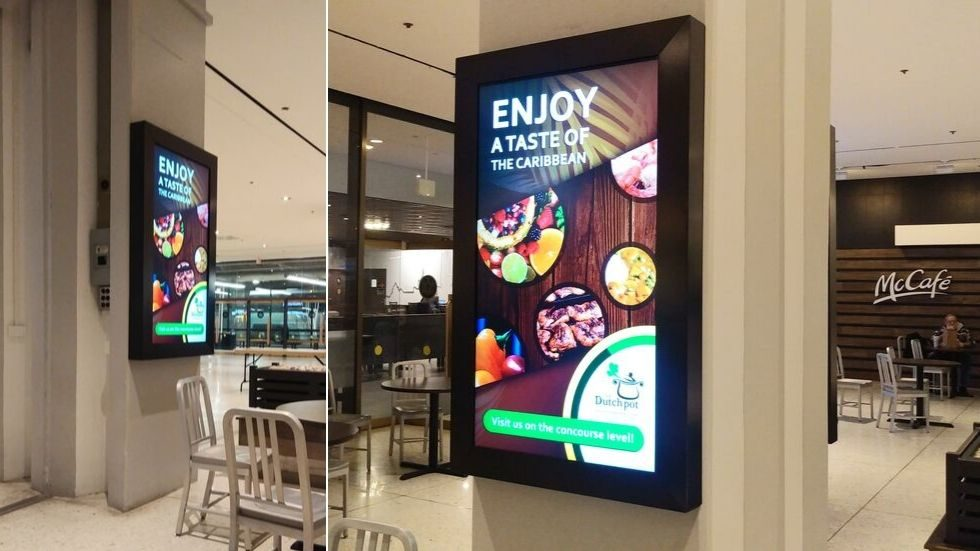
#ตลาด DigitalSignage การเติบโต #DigitalSignageIndustryAnalysis #AdPlacementAccuracy #PremiumBrandAdvertising #DigitalSignageSmartification #InteractiveDigitalSignage การพัฒนาตราสาระการแสดงภาพดิจิตอล
สาขาอุตสาหกรรมไหนที่ใช้ป้ายดิจิตอลเพื่อโฆษณาอย่างรวดเร็ว?
1. การประชุม ขายปลีก: ดึงดูดลูกค้าและเพิ่มยอดขาย
อุตสาหกรรมขายปลีกเป็นหนึ่งในกลุ่มแรกที่ใช้โฆษณาด้วยป้ายดิจิตอล และยังคงขยายตัวอย่างรวดเร็ว ศูนย์การค้า, ร้านค้าแบรนด์, ซุปเปอร์มาร์เก็ต เป็นต้น ได้ใช้จอโฆษณาที่ฉลาด ซึ่งไม่ใช่อันการแสดงสินค้าเท่านั้น แต่ยังสามารถให้คําแนะนําที่บุคคลสอดคล้องได้ ร่วมกับ AI เพื่อปรับปรุงอัตราการแปลงการ
สถานการณ์การใช้งาน:
(1) หน้าจอแสดงผลิตภัณฑ์แบบปฏิสัมพันธ์: ทําให้ลูกค้าสามารถเรียนรู้รายละเอียดของผลิตภัณฑ์ การเลือกสี และแม้แต่ลองเสื้อผ้าแบบเวอร์ชูอัลผ่านหน้าจอสัมผัส
(2) ระบบแนะนําที่ฉลาด: AI รวมลักษณะการซื้อของลูกค้าเพื่อแนะนําสินค้าที่เหมาะสมโดยอัตโนมัติ
(3) โฆษณาโปรโมชั่นแบบไดนามิก: ปรับเนื้อหาโปรโมชั่นให้เหมาะสมกับสภาพของคลังสินค้า สภาพอากาศและช่วงเวลา เพื่อเพิ่มความแม่นยําของโฆษณา
ข้อดีของการใช้:
การดึงดูดความสนใจของลูกค้า: เนื้อหาการโฆษณาแบบไดนามิกมีผลต่อภาพมากกว่าโปสเตอร์แบบดั้งเดิม
ปรับปรุงประสบการณ์การปฏิสัมพันธ์ของลูกค้า: จอสัมผัสและการปฏิสัมพันธ์กับรหัส QR ปรับปรุงประสบการณ์การซื้อขาย
การอัพเดทเนื้อหาในเวลาจริง: นุ่มนวลกว่าการโฆษณาบนกระดาษแบบดั้งเดิม ลดต้นทุนการเปลี่ยน
กรณี: ไนกี้ได้ติดตั้งจอโฆษณาที่ฉลาดในหลายร้านค้าทั่วโลก ลูกค้าสามารถสแกนรหัส QR เพื่อรับข้อมูลสินค้า และแม้แต่การปรับสีรองเท้าสเนคเกอร์ของพวกเขา เพื่อเพิ่มประสบการณ์การปฏิสัมพันธ์ของแบรนด์
2. การใช้ อุตสาหกรรมอาหารเร็วและอาหารอร่อย: เมนูดิจิตอลและคําแนะนําที่ฉลาด
เครือข่ายอาหารเร็ว ร้านกาแฟ และแบรนด์อาหารอื่น ๆ กําลังนํามาใช้ป้ายดิจิตอลอย่างแพร่หลาย โดยหลัก ๆ สําหรับเมนูดิจิตอล การโฆษณาแบบไดนามิก และคําแนะนําที่กําหนดเอง
สถานการณ์การใช้งาน:
(1)บอร์ดเมนูอิเล็กทรอนิกส์: ปรับอาหาร ราคาและข้อมูลโปรโมชั่นในเวลาจริงเพื่อเพิ่มประสิทธิภาพการดําเนินงาน
(2) คําแนะนําที่ฉลาด: ขับส่งอาหารที่แนะนําขึ้นอยู่กับสภาพอากาศ, สินค้าและความชอบของลูกค้า
(3) การปฏิสัมพันธ์ด้วยเสียง AI: ลูกค้าสามารถสอบถามข้อมูลทางโภชนาการหรือสั่งซื้อผ่านเสียง
ข้อดีของการใช้:
ปรับปรุงประสบการณ์การสั่งซื้อของลูกค้า เมนูดิจิตอลเป็นสิ่งที่เข้าใจง่ายและง่ายต่อการอัพเดท ลดการเสียเมนูพิมพ์
ปรับปรุงประสิทธิภาพการดําเนินงาน: การสั่งซื้อด้วยการบริการตนเอง ลดค่าแรงงานและเพิ่มความเร็วในการประมวลผลการสั่งซื้อ
เพิ่มยอดขาย: แนะนํา "การปรับปรุงแพคเกจ" หรือ "การซื้อเพิ่ม" ให้ลูกค้าเพิ่มราคาต่อหน่วย
กรณี: แม็คโดนัลด์'ส ใช้เมนูดิจิตอล AI + เพื่อให้คําแนะนําที่เหมาะสมกับตัวคุณเอง โดยใช้ประวัติการซื้อของลูกค้า เพิ่มค่าสั่งซื้อเฉลี่ย (AOV)
3. การ สร้าง อุตสาหกรรมการขนส่ง: การปล่อยข้อมูลที่ฉลาด และการโฆษณาที่เป้าหมาย
สถานที่ขนส่ง เช่น สนามบิน สถานีรถไฟใต้ดิน และทางด่วน ได้กลายเป็นสถานที่สําคัญสําหรับการโฆษณาด้วยป้ายดิจิตอล ลักษณะของการจราจรที่สูงและการเผชิญหน้าสูง ทําให้อุตสาหกรรมการขนส่งเป็นสถานที่ที่นิยมสําหรับการตลาดแบรนด์
สถานการณ์การใช้งาน:
(1) หน้าจอข้อมูลการบิน / รถไฟฟ้าอิเล็กทรอนิกส์: อัพเดทในเวลาจริงของการบินและการเคลื่อนไหวของรถไฟเพื่อปรับปรุงประสบการณ์ของผู้โดยสาร
(2) โฆษณาแบรนด์ระดับสูง: โฆษณาแบรนด์หรูสําหรับผู้โดยสารสนามบินเพื่อเพิ่มอัตราการแปลง
(3) การนําทางทางในเวลาจริง: รวมไปกับเทคโนโลยี AR / VR ทําให้ผู้โดยสารสามารถหาประตูขึ้นเครื่องหรือพื้นที่รอง่ายขึ้น
ข้อดีของการใช้:
การครอบคลุมที่กว้างขวาง: การใช้ป้ายดิจิตอลในสถานที่สาธารณะสามารถเข้าถึงจํานวนมากของผู้คนได้
อัพเดทข้อมูลอย่างรวดเร็ว: เหมาะสําหรับการโฆษณาในเวลาจริง เช่น โปรโมชั่นกิจกรรม ข่าวด่วน ฯลฯ
โปรแกรมการโฆษณา: โดยใช้เทคโนโลยี AI เนื้อหาการโฆษณาถูกปรับเปลี่ยนตามปัจจัย เช่น ความหนาแน่นของฝูงชน ระยะเวลา สภาพอากาศ เป็นต้น เพื่อเพิ่มความแม่นยําของการจัดส่ง
กรณี: สนามบินนานาชาติดูไบ ใช้ AI รวมไปกับจอโฆษณาดิจิตอล เพื่อวิเคราะห์ข้อมูลการไหลของผู้โดยสารในเวลาจริง และวางโฆษณาของแบรนด์หรูหราอย่างแม่นยําเพื่อเพิ่มประสิทธิภาพการโฆษณา
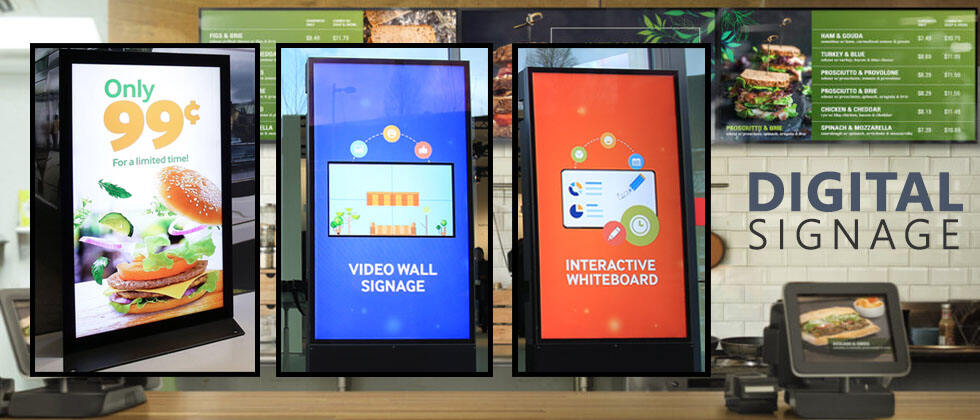
4.อุตสาหกรรมการแพทย์: การจัดการข้อมูลและการศึกษาด้านสุขภาพ
สถาบันการแพทย์ เช่น โรงพยาบาล คลินิก และร้านขายยา ก็กําลังนําการโฆษณาด้วยสัญญาณดิจิตอล มาใช้อย่างรวดเร็ว เพื่อเพิ่มประสิทธิภาพในการปล่อยข้อมูล และปรับปรุงประสบการณ์ของผู้ป่วย
สถานการณ์การใช้งาน:
(1) ระบบคิวที่ฉลาด: ลดเวลารอผู้ป่วยและเพิ่มประสิทธิภาพการรักษา
(2) หน้าจอการศึกษาด้านสุขภาพ: เล่นวีดีโอวิทยาศาสตร์ยอดนิยม, แพร่กระจายความรู้ด้านสุขภาพ และเพิ่มความรู้ของผู้ป่วย
(3) การโฆษณาแบรนด์ยา: การรวม AI เพื่อแนะนํายาและผลิตภัณฑ์สุขภาพที่เหมาะสมตามภาวะของผู้ป่วย
ข้อดีของการใช้:
ลดความกังวลของผู้ป่วย ระบบการเรียกเวลาจริงทําให้ผู้ป่วยทราบความก้าวหน้าของการรอ
ปรับปรุงประสิทธิภาพการปฏิบัติงานของโรงพยาบาล: ลดความกดดันในการปรึกษาฝ่ายรับบริการและปรับปรุงประสบการณ์การรักษาของผู้ป่วย
การศึกษาสุขภาพ: การกระจายการป้องกันโรค การกินอาหารที่มีสุขภาพดี การฉีดวัคซีน เป็นต้น เพื่อเพิ่มความรู้ด้านสุขภาพสาธารณะ
กรณี: โรงพยาบาลบางแห่งในสหรัฐอเมริกาใช้ป้ายดิจิตอล เพื่อเล่นข้อมูลการเยี่ยมหมอ คําแนะนําด้านสุขภาพ และแม้กระทั่งรวม AI เพื่อคาดการณ์เวลารอผู้ป่วย เพื่อปรับปรุงคุณภาพการบริการ
5.สํานักงานบริษัทและสถานที่ประชุม: การประชุมที่ฉลาดและการส่งเสริมการขายสินค้า
ใบแสดงสัญญาณดิจิตอลไม่ได้ใช้สําหรับการโฆษณาภายนอกเท่านั้น แต่ยังถูกใช้อย่างแพร่หลายในการจัดการการประชุม การแจ้งเตือนพนักงาน และการแสดงสินค้าภายในบริษัท
สถานการณ์การใช้งาน:
(1) ระบบจองห้องประชุม: แสดงสถานะการจองห้องประชุมในเวลาจริง เพื่อลดความขัดแย้ง
(2) ช่องโครงการส่งเสริมวัฒนธรรมบริษัท: เล่นวิสัยทัศน์บริษัท, เรื่องราวของแบรนด์, กิจกรรมของพนักงานและเนื้อหาอื่น ๆ เพื่อเพิ่มความรู้สึกของพนักงาน
(3) หน้าจอต้อนรับผู้เข้าชม: ใช้ป้ายดิจิตอลที่โต๊ะรับบริการ เพื่อต้อนรับผู้เข้าชมและเสริมภาพของบริษัท
ข้อดีของการใช้:
เสริมภาพของบริษัท: หน้าจอฉลาดที่ทันสมัยเพิ่มความรู้สึกของเทคโนโลยีและทิ้งความประทับใจทางมืออาชีพต่อผู้เข้าชม
ปรับปรุงการสื่อสารภายใน: อ่อนแอกว่าอีเมลและบอร์ดประกาศ, ปรับปรุงประสิทธิภาพการส่งสารสนเทศ
รองรับการทํางานไกล: รวมกับระบบประชุมในเมฆเพื่อให้เกิดการร่วมมืออย่างต่อเนื่อง
กรณี: กูเกิลใช้ป้ายดิจิตอลที่ฉลาดในหลายสํานักงานทั่วโลก รวมไปถึงระบบปฏิทินการประชุม เพื่อให้มีการจัดการห้องประชุมโดยอัตโนมัติ ปรับปรุงประสิทธิภาพของสํานักงานได้อย่างมาก
การคาดการณ์ตลาดในอนาคต: แนวโน้มการเติบโตของป้ายดิจิตอลสําหรับการโฆษณา
(1) การโฆษณาที่ฉลาดโดยใช้ AI และ Big Data
การใช้ป้ายดิจิตอลในอนาคตจะรวมเทคโนโลยี AI เพื่อบรรลุการโฆษณาที่บุคคลสรรค์ โดยใช้การจําหน่ายใบหน้า การวิเคราะห์กระแสลูกค้า และการคาดการณ์พฤติกรรมของผู้บริโภค
การวิเคราะห์ข้อมูลสามารถปรับเนื้อหาการโฆษณาขึ้นอยู่กับเวลา สภาพอากาศ สถานที่ทางภูมิศาสตร์ และนิสัยของผู้ใช้ เพื่อเพิ่มความแม่นยําของการโฆษณา
ตัวอย่างเช่น ในศูนย์การค้า อีไอสามารถระบุลักษณะของลูกค้า (เช่นอายุและเพศ) และเล่นเนื้อหาโฆษณาที่เหมาะสมกับกลุ่มคนนั้นโดยอัตโนมัติ
(2) 5G และอินเตอร์เน็ตของสิ่งของ (IoT) เพิ่มประสบการณ์การโฆษณาแบบปฏิสัมพันธ์ในเวลาจริง
เทคโนโลยี 5G ให้การส่งข้อมูลความเร็วสูงและความช้าต่ํา ทําให้การโฆษณาวีดีโอในเวลาจริงและการโฆษณา AR / VR สัมผัสเป็นไปได้
อินเตอร์เน็ตของสิ่งของ (IoT) ทําให้การป้ายดิจิตอลสามารถเชื่อมโยงกับโทรศัพท์มือถือ, อุปกรณ์ที่ใส่ได้, บ้านฉลาด, เป็นต้น, สร้างประสบการณ์การโฆษณาที่รวยกว่า
ตัวอย่างเช่น การใช้สัญลักษณ์ดิจิตอลสามารถให้สมาชิกกับสมาร์ทโฟน และผู้ใช้สามารถปฏิสัมพันธ์และร่วมกิจกรรมการโฆษณา โดยการสแกนรหัส NFC เป็นต้น
(3) โปรแกรมการโฆษณาส่งเสริมการส่งโฆษณาที่แม่นยํา
การโฆษณาแบบโปรแกรมเมทิก ทําให้ผู้ประกาศสามารถปรับเนื้อหาการโฆษณาได้อย่างไดนามิก โดยใช้ข้อมูลในเวลาจริง (การจราจรของผู้ชม, สภาพอากาศ, เขตธุรกิจ เป็นต้น) เพื่อปรับปรุง ROI
ผู้ประกาศสามารถเปลี่ยนโฆษณาได้ตลอดเวลา โดยใช้ข้อมูลของผู้ชม ระยะเวลา และความต้องการของตลาด เพื่อปรับปรุงประสิทธิภาพในการจัดส่ง
ตัวอย่างเช่น ในช่วงฝนตกหนัก หน้าจอโฆษณาในศูนย์การค้าสามารถเปิดโฆษณาสินค้าที่เกี่ยวข้อง เช่น ร่มและเสื้อฝนได้โดยอัตโนมัติ
(4) เมืองฉลาดและการขนส่งฉลาดกําลังได้รับความนิยมมากขึ้น
ประเทศกําลังส่งเสริมการก่อสร้างเมืองที่ฉลาด เช่น สถานีรถเมล์ที่ฉลาด หน้าจอโฆษณาในรถไฟใต้ดิน หน้าจอข้อมูลเที่ยวบินในสนามบิน เป็นต้น ซึ่งกําลังขับเคลื่อนการเติบโตของตลาดป้ายดิจิตอล
การรวมโฆษณาดิจิตอลกับบริการสาธารณะ เช่น สภาพอากาศในเวลาจริง สภาพการจราจร และข้อมูลข่าว ทําให้ป้ายดิจิตอลเป็นศูนย์กลางข้อมูลสําหรับเมือง
ตัวอย่างเช่น เมืองอย่างลอนดอนและโตเกียว ได้รับการใช้ป้ายดิจิตอลอย่างแพร่หลาย เพื่อให้บริการข้อมูลที่เหมาะสมกับประชาชน
(5) แนวโน้ม O2O (การรวมออนไลน์-ออฟไลน์) ดําเนินการปรับปรุงป้ายโฆษณาปลีก
การรวมกันของการค้าออนไลน์และการค้าปลีกออฟไลน์ ทําให้การใช้ป้ายดิจิตอล เป็นเครื่องมือสําคัญในการตลาดร้านค้า
AI + touch screen = คู่มือช้อปปิ้งแบบใช้งานเอง ลูกค้าสามารถซื้อขาย จองและชําระเงินได้โดยตรงบนหน้าจอ ซึ่งช่วยเพิ่มอัตราการแปลง
ตัวอย่างเช่น ร้านค้าแบรนด์อย่าง ไนกี้ และ อาดิดาส ได้นําหน้าจอฉลาดมาให้คําแนะนําสินค้าที่เหมาะสมกับตัวคุณเอง
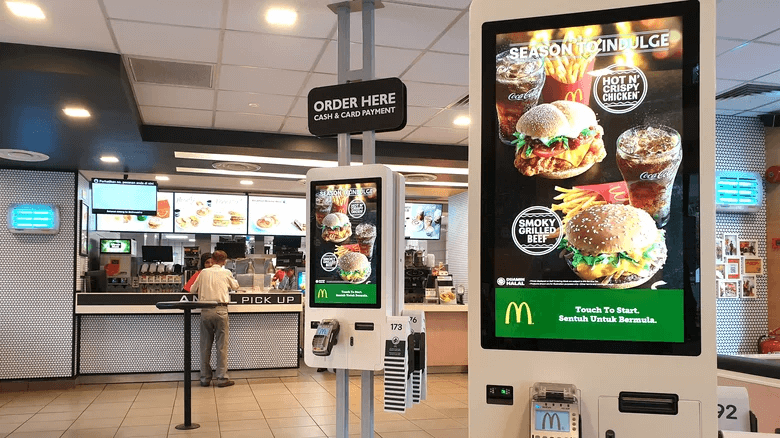
แนวทางการพัฒนาเทคโนโลยีในอนาคต
(1) ความละเอียดสูงสุด (4K/8K) หน้าจอยืดหยุ่นและหน้าจอโปร่งใส
การใช้สัญญาณดิจิตอลในอนาคตจะใช้ความละเอียดสูงกว่า (4K/8K) เพื่อเพิ่มประสบการณ์ทางสายตา
OLED, Micro LED และจอโปร่งจะทําให้จอโฆษณาบางและประหยัดพลังงานมากขึ้น
ตัวอย่างเช่น ผ้าม่านกระจกติดผนังโฆษณาถูกใช้ในร้านค้าปลีก ท่าอากาศยาน ห้องแสดงสินค้า เป็นต้น เพื่อเสริมสร้างความรู้สึกของยอดนิยมของแบรนด์
(2) AI การปฏิสัมพันธ์เสียงและเซ็นเซอร์ร่างกาย
เทคโนโลยีการจําแนกเสียง: ใบแสดงสัญญาณดิจิตอลสามารถให้บริการที่บุคคลสอดคล้องได้ ผ่านการปฏิสัมพันธ์ด้วยเสียง เช่นจอคู่มือที่ฉลาดในล็อบบี้ของโรงแรม
การปฏิสัมพันธ์กับเซ็นเซอร์ร่างกาย: ผู้ใช้สามารถใช้การแสดงอาการเพื่อควบคุมเนื้อหาของจอโฆษณา เช่น กระจกแต่งตัวและจอทดลองขับรถเสมือนจริงในห้องแสดงรถ
(3) โฆษณา AR/VR ความเป็นจริงเพิ่มเติม
การโฆษณาในอนาคตจะทําให้เราซึมซึมมากขึ้น เทคโนโลยี AR/VR จะทําให้ผู้บริโภคสามารถลองใส่แว่นตา เสื้อผ้า และเครื่องสําอาง
ตัวอย่างเช่น IKEA ได้ใช้การแสดงสัญญาณดิจิตอล AR เพื่อให้ลูกค้าสามารถจําลองผลของการวางเฟอร์นิเจอร์บนจอ
(4) Blockchain + การแสดงสัญญาณดิจิตอลเพื่อเพิ่มความโปร่งใสในการโฆษณา
เทคโนโลยี Blockchain สามารถใช้ในการเก็บข้อมูลโฆษณา, การรับรองความเป็นจริงของการคลิกโฆษณาและเวลาเล่น และป้องกันการหลอกลวงการจราจรที่ไม่ถูกต้อง
ผู้ประกาศสามารถซื้อพื้นที่โฆษณาโดยตรงผ่านแพลตฟอร์ม blockchain เพื่อปรับปรุงอัตราการใช้งบประกาศ
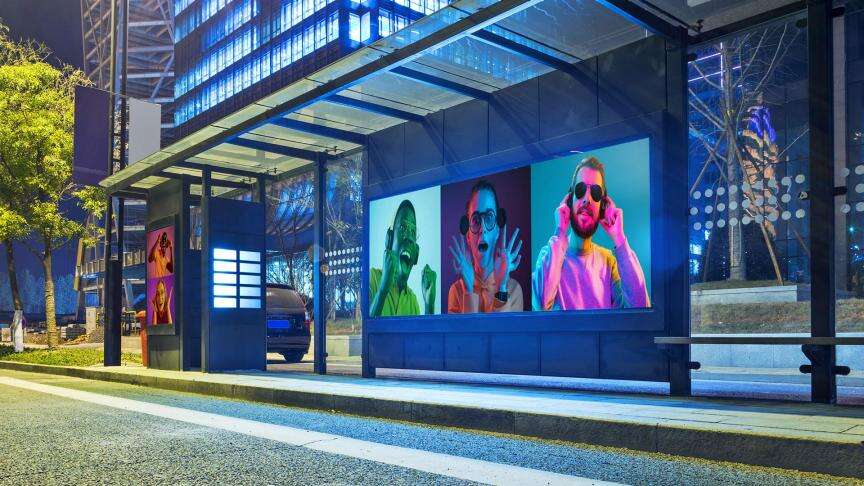
สรุป: ใบแสดงสัญญาณดิจิตอล กําลังกลายเป็นเครื่องมือการตลาดสําหรับอุตสาหกรรมต่างๆ
ไม่ว่าจะเป็นการค้าปลีก, การจัดเลี้ยง, การขนส่ง, การแพทย์หรือสํานักงานบริษัท การโฆษณาด้วยป้ายดิจิตอล กําลังได้รับความนิยมอย่างรวดเร็ว และนําประสบการณ์การตลาดที่ฉลาดและมีประสิทธิภาพมากขึ้น สําหรับบริษัท ตอนนี้เป็นเวลาที่ดีที่สุดในการนํา Digital Signage มาใช้
หากบริษัทของคุณกําลังพิจารณาใช้ Digital Signage ขอต้อนรับมาหารือกัน คุณคิดว่าอุตสาหกรรมไหนจะเป็นจุดเติบโตต่อไปของการใช้ป้ายดิจิตอล แบ่งปันความคิดเห็นของคุณในส่วนความคิดเห็น


